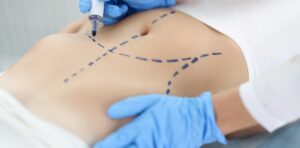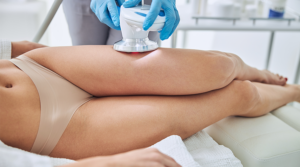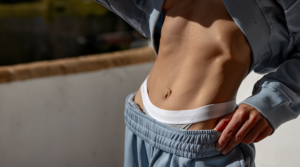Liposuction is one of the most popular cosmetic procedures worldwide, offering patients the opportunity to reshape their bodies by targeting stubborn pockets of fat that don’t respond to diet and exercise. While the procedure can deliver dramatic results, the long-term success of liposuction greatly depends on what happens after you leave the operating room.
As a patient, your role in optimizing your results after liposuction is critical. By following best practices during recovery and making smart lifestyle choices, you can enhance your outcome, minimize complications, and enjoy long-lasting body contouring benefits. Here’s how to make the most of your investment in yourself.
1. Follow Post-Operative Instructions Closely
After your liposuction procedure, your surgeon will provide you with detailed recovery guidelines. These instructions are not optional—they are essential for proper healing and optimal results.
Typical instructions include:
- Wearing a compression garment for the prescribed duration
- Taking medications as directed to manage pain or prevent infection
- Caring for incisions and monitoring for signs of complications
- Attending all follow-up appointments
Neglecting even small parts of these instructions can slow recovery, increase swelling, or affect the smoothness and evenness of your results.
2. Wear Your Compression Garment Faithfully
Compression garments are one of the most important tools for recovery. They help:
- Reduce swelling and fluid buildup (edema)
- Support the healing tissues
- Encourage skin to conform to the new contours
- Improve circulation and reduce the risk of blood clots
Typically, you’ll need to wear the garment 24/7 (except for showers) during the first 2–4 weeks, and then for part of the day for a few additional weeks. Make sure your garment fits well—snug but not so tight that it causes numbness or discomfort.
3. Stay Active—But Smartly
Rest is crucial in the early days post-surgery, but movement is equally important to prevent complications like blood clots and to stimulate lymphatic drainage. Gentle walking for short periods around the house starting the day after surgery can be beneficial.
However, strenuous exercise, heavy lifting, and high-impact activities should be avoided for several weeks. Most patients can return to full physical activity after 4–6 weeks, but always follow your surgeon’s timeline.
4. Consider Lymphatic Drainage Massage
Many plastic surgeons recommend lymphatic drainage massage after liposuction, particularly for procedures involving larger areas or multiple sites. These specialized massages:
- Help reduce swelling more quickly
- Break down fibrous tissue and reduce the risk of lumps or unevenness
- Improve circulation and speed up the healing process
Be sure to consult your surgeon before starting massage therapy. If approved, seek a licensed therapist experienced in post-surgical lymphatic massage.
5. Stay Hydrated and Eat Nutrient-Rich Foods
Proper nutrition is essential for healing and maintaining your results. Your body needs the right fuel to repair tissues and reduce inflammation.
Focus on:
- Lean proteins (chicken, fish, legumes, tofu)
- Fruits and vegetables (rich in vitamins A, C, and antioxidants)
- Whole grains (for energy and fiber)
- Healthy fats (avocados, nuts, olive oil)
- Plenty of water (aim for at least 8 cups a day unless otherwise directed)
Avoid processed foods, sugary snacks, excessive salt, and alcohol—these can cause inflammation, water retention, and weight gain.
6. Do Not Smoke or Vape
Smoking and nicotine use restrict blood flow and can compromise healing, increase the risk of infection, and interfere with your final results. Most surgeons require patients to stop smoking at least 2–4 weeks before and after surgery.
If you’re serious about getting the best results—and protecting your overall health—this is a critical lifestyle change to make.
7. Be Patient: Swelling and Results Take Time
One of the most common concerns after liposuction is that results aren’t immediately visible. That’s because swelling can persist for weeks or even months, depending on the extent of the procedure.
You may notice initial changes within a few weeks, but the final results typically take 3–6 months to fully emerge. During this time:
- Your swelling will gradually resolve
- The treated areas will smooth and settle
- Skin will retract to fit your new contours (especially if you’re younger and have good elasticity)
Don’t rush the process or become discouraged. Healing is gradual and varies from person to person.
8. Maintain a Stable, Healthy Weight
Liposuction removes fat cells from specific areas, but it doesn’t prevent future weight gain. If you gain weight after surgery, the remaining fat cells—both in treated and untreated areas—can expand, potentially distorting your results.
To preserve your new shape:
- Stick to a healthy diet
- Exercise regularly (cardio, strength training, flexibility)
- Weigh yourself periodically to monitor changes
Even small, consistent efforts can make a big difference in maintaining your outcome.
9. Be Realistic and Kind to Yourself
Liposuction can deliver a more sculpted appearance, but it’s not a weight-loss solution or a substitute for a healthy lifestyle. Results are best in people who are close to their ideal weight and have good skin tone.
Additionally, it’s natural to feel a range of emotions during recovery—from excitement to impatience to self-doubt. If you’re feeling anxious or down about your progress, speak with your surgeon or consider joining a support group.
Conclusion
Your journey to a more sculpted body doesn’t end in the operating room—it continues through how you care for yourself in the days, weeks, and months after liposuction. By diligently following post-op care, supporting your body’s healing process, and embracing healthy habits, you can enjoy long-lasting, beautiful results.
Liposuction is a tool—not a shortcut—and optimizing your outcome means becoming an active participant in your own transformation. With time, consistency, and self-care, the results you envisioned can become your new reality.













